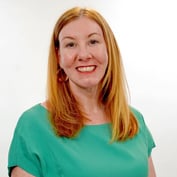A woman, who just came into “a sizeable amount of money,” received a phone call from her and her husband’s financial planner.
“He took my husband to the golf course to play 18 and then said, ‘Call your wife and tell her to meet us in the clubhouse and we’ll tell her how we’re going to invest her money,’ ” she recalls. “That financial advisor lost our entire asset portfolio over the fact that I was not a fully engaged partner and the focus was not on me and my desires. It was not on my terms or turf to have those conversations.”
What makes the story especially surprising is that the woman who tells it is Cathy Weatherford, president and CEO of the Insured Retirement Institute (IRI), and a former president of the National Association of Insurance Commissioners. Someone the advisor should have known would have deep knowledge of financial matters.
Soon after, Weatherford started interviewing new advisors, both male and female.
“The advisor I chose was the one who started the conversation with me around… ‘What are your goals in retirement? Do you have family members that you will need to support in retirement?’ They asked me the right questions,” she says.
A different view
Such queries zone in on the most fundamental difference between how men and women view retirement planning. For women, it’s not about accumulating a set dollar amount, but rather how that money can finance what they see themselves doing during retirement — spending more time with family or volunteering, for example.
“It’s not strictly a financial decision. Money is only our means to get to much more human goals,” Weatherford says.
Understanding how women perceive their golden years can aid an advisor in reaching the women’s market, says Suzanne Schmitt, assistant vice president, consumer insights, at Lincoln Financial Group, in Radnor, Pa.
“For women, the act of accruing wealth isn’t about growing wealth for wealth’s sake. It’s about the security that additional wealth provides for them,” she explains. “We also know most women think not so much in terms of ‘me,’ but in terms of ‘we.’ They are more apt than the typical man to consider their families’ ecosystem and all the folks they have to provide for in terms of the solutions…that are going to work for them, not just individually but their entire family.”
But how to get there?
Many studies underscore the fact that women face daunting hurdles on their road to a secure retirement. Over the course of her lifetime, a typical, college-educated 25-year-old woman earns about $500,000 less than her male counterpart, according to the Women’s Institute for a Secure Retirement (WISER).
Further, according to an IRI study, only 35 percent of boomer women have saved at least $200,000 for retirement compared to half of boomer men.
Having to leave her job due to caregiving responsibilities could partially explain those shortfalls: A woman loses $324,044 in wages and Social Security benefits when she exits the workforce early to care for the needs of loved ones, reports MetLife Mature Market Institute.
But when it comes time for her needs to be taken care of, women generally need more funds. Lifetime health-care costs are about $100,000 higher for a woman than for a man: $361,200 for women versus $268,700 for men, reports a 2004 article in the Health Services Research Journal.
Yet even as more women classify themselves as the breadwinner in the family and are taking the reins of their family’s finances, they say they lack confidence in financial matters and planning for their retirement.
“What we found, which was surprising to us, is that while women are earning more, they have become even less confident in achieving their key financial goals, particularly retirement security,” says Joan H. Cleveland, senior vice president, business development, individual life insurance, Prudential Financial, Inc. in Newark, N.J.
Seeing the trees, not the forest
In the recent Prudential study, “Financial Experience & Behaviors Among Women,” women listed their top three financial concerns as covering household expenses, paying down household debt and then saving for retirement. For men the top three were the overall economy, then household expenses and saving for retirement.
So while they are heavily focused on the day-to-day household ledgers, women may lose sight of the long-term goal of planning for retirement.
“While they are the primary financial decision maker in the household—they understand the cost of groceries, how much PTA dues are and they can probably tell you down to nickels and dimes what comes into their cash flows every month and out—I don’t know that women have spent a great deal of time becoming savvy when it comes to the strategy of saving for retirement, or when it comes to building out that nest egg,” Weatherford says.
Perhaps that’s because while women know the dollars and cents of household finances, their overall knowledge of financial products may fall short, Cleveland says.
Bridging the knowledge gap
To bridge that gap, more education is needed, not just on retirement planning in general, but on specific investment instruments, like stocks, mutual funds and bonds.








 September 24, 2012 at 08:00 AM
September 24, 2012 at 08:00 AM










